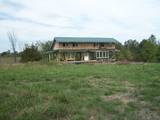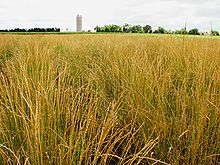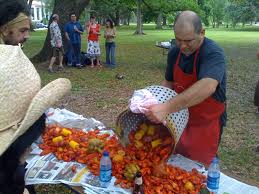When was the last time you expressed gratitude for gravity?
— Ethan Hughes
In early September, before I went to Dancing Rabbit, I spent two weeks at Possibility Alliance, or as they are now calling the farm itself, the Still Waters Sanctuary. Possibility Alliance is more of a name for the entire project which includes the farm, the Superheroes Rides, the new permaculture school next door, and a support network of similar communities elsewhere.
The farm is located in north-central Missouri, about 3 miles from the nearest small town with a train station (and 40 minutes’ ride from Dancing Rabbit). The college town of Kirksville is only 13 miles north. The land itself is slightly rolling, mostly deciduous woods and old exhausted pastures, a couple of ponds. This is an agricultural area and many of the neighbors are Amish. It all began with an 80 acre farm and a rundown Amish house which has been partially renovated.

There is an outdoor kitchen made of cob, a large barn, and a nearly finished tiny cob house for the founders, Sarah and Ethan Hughes, and their two small daughters. Another house, a straw-bale duplex built on durable osage orange stilts, is about midway in development. More land has been added since. Friends of Possibility Alliance have also been buying land and building in the neighborhood.


Along with me, three other visitors came: soft-spoken Nathan from Chicago, a musician and shaman in training, irrepressible Danny from Florida on a train tour of communities, and Corey, a raconteur and jack of all trades from St. Louis who showed up unannounced in his 1951 truck. Six adult residents were living on the farm: Sarah and Ethan, Ariel, Mark, Dan and Phoenix; many day visitors dropped in all the time. There is a large flock of chickens and several ducks and geese. A small herd of goats provides milk for the delectable goat cheese we were lucky to nibble on almost every day. A cow with a calf was being milked as well, and two draft horses helped with the big chores. A couple of barn cats and a working dog complete the picture.

Gardens are fenced and the chickens run free. First impression is a farming idyll: happy scratching hens, ducks in the pond, many fruit trees and grapevines surrounding the house, and a friendly bustle as everyone goes about their farm chores. The day begins at 6 am with the ringing of the bell (luckily, I slept the sleep of the exhausted and I never heard it except once). The first bell calls people to sit in silence; yoga follows. Breakfast bell rings at 7:45, a quick check-in after breakfast divvies up the chores, then work until another bell rings. Lunch, a bit of a siesta (or a consensus meeting, or a discussion) and more work until the dinner bell. Some chores don’t go by the clock, and those who care for the animals are often out till dark. Several times during the day, the ‘bell of mindfulness’ peals slowly, calling everyone to stop work, become aware of the surroundings, and bring one’s consciousness into the now. ‘Noble silence’ reigns in the house on Thursday nights. Mayhap this is a version of the new monasticism?
The farm runs on the gift economy. Only about $9,000 per year covers all expenses. A 20% portion of incoming donations are passed on to other communities. They only have three monthly bills to pay (phone, water and bulk food), and minimal yearly property taxes. No visitor is charged for the stay. All workshops — even permaculture classes — are offered on donation basis; no one is turned away. Each person who joins the community is expected to give all their assets away. One builds social capital instead of financial capital, while “looking for a way to live so that all life can thrive.” The detailed vision (more here) is inspired by Gandhi and Lanza del Vasto.
There is no electricity; I kept groping for light switches the first week I was there. Home-made beeswax tapers light the inside of the house. Running water, provided by the county, is supplemented by stored roof run-off. No cell phones or fossil fuels are allowed on the farm, and people who wish to smoke or drink can take it out on the road. Computer use is discouraged even off-farm. The otherwise peaceful and dark nights are marred by trains passing less than half a mile away at all hours, shaking the earth and honking like mad; as one train disappears over the sonic horizon, another one rumbles in. Bicycles are the main conveyance; no one owns a car.

My day started with fowl liberation. I got up before 7 to open the door of the chicken coop, and stood there transfixed with astonishment and delight as the feathery avalanche poured out, running, flying, and squawking. A new day, woo-hoo! Enough infectious joy to turn this night owl into a morning person. And for a few days I also went with Phoenix to assist with evening milking, tucking the goats in with some night fodder. The days are intense, and everyone works very hard. When chores are done, there are meetings and workshops to attend, or events to host. That Friday, we had visitors from a nearby old folks home and put on a show for them. The following day was Harvest Festival. It started as a country-craft show — candle dipping, bread baking, cider pressing, bicycle-powered flour grinding, bow making — and evolved into a pleasant neighborly hangout. Kids having fun, helping with crafts or running off to explore. Grown-ups standing around, chatting, making leisurely connections, reluctant to leave. Over a hundred people attended. The other Saturday was filled with workshops: morning and evening devoted to the study of coherence counseling, and that afternoon Ethan gave a spirited presentation on beekeeping to about 10 people who had signed up. On Sunday mornings, the farm hosts a Quaker meeting.


The food was very good, and plentiful. Though one of the gardens died this year because of the drought, the remaining four gardens provided much of our food, and sadly, we also ate one of the ducks, and a rooster. Diet’s omnivorous, though heavy on the side of fresh produce. Some of the meals were extra yummy and downright creative. Ariel’s eggplant zakuski (a garlicky chutney) was out of this world, and so were Mark’s fresh breads and Dan’s fluffy eggy frittata! One notable dinner included a sumptuous lasagna, goat cheese with lime liqueur, and old fashioned apple pie. Our hosts took turns cooking in the outdoor kitchen equipped with three rocket stoves, 3 solar ovens, and an earth oven. A summer kitchen is essential in this climate. It was — with the exception of one day — hellaciously hot, and frequent leaps into the nearby pond let me live another day. (My little LED alarm clock melted in the heat.)

As you can see, there is much to admire here, and much to love. Being part of a subsistence farm again after a lifetime away was, for me, a dream come true. I learned so much! Cheese and candle making, cooking on rocket stoves, solar apple drying, chicken care… and last not least restorative circles, wellbeing meetings and gratitude rituals. The parting ceremony, where each person leaving stands inside the circle while the others take turns showering them with appreciation, truly touched my heart. Internal organization runs smoothly, and unlike in most intentional communities, there is an emphasis on external politics: protests attended, bike coops and school gardens started. Service to the larger community — such as their give-away plant nursery in the spring — is an ongoing practice. You want radical? This place is radical.

Hygiene was atrocious. Thick, maddening swarms of flies were everywhere, on the food as it was being made, as it was being served. And this with the stinky composting privy a stone’s throw away. Dirty rags are used to wipe kitchen surfaces with vinegar water, people don’t necessarily wash hands, er, when they should, I saw food served after getting dropped on the ground, water for washing dishes came off the roof, and at Friday night shabbat dinners people drink from the same wine cup and feed each other bits of bread, regardless of their own state of health. During the first week, several people came down with vomity queazies. My bad turn came the following week when I caught a nasty intestinal bug — or should I say, an E. coli caught me? — that refused to leave even after I went home, would not respond to any home remedies, and finally necessitated a course of two antibiotics. And I brought Corey’s cold home with me as well.
But it wouldn’t be accurate just to say I came down with the runs. What happened? Well, ten days into my stay I collapsed. My sickness was one part of it, and so was exhaustion from unaccustomed work and the heat. What bore down the heaviest, though, was the relentlessness of the life. Relentless physical work. Relentless commitments. Relentless socialization. Relentless overscheduling (even music nights were scheduled!). Relentless gregariousness, relentless ‘people everywhere,’ all the time. The life of the PA farm is one long self-imposed crisis — a crisis caused by too few people, with too few resources, running a working farm, hosting hordes of visitors (some 1,500 a year) and trying to fulfill a vastly ambitious and demanding vision that never quits. It was like being on a treadmill, albeit different from the one we know in Babylon. One of the younger residents was suffering from severe fatigue and debilitating body pains, after two years of this onslaught. The misery of no solitude, no privacy. The stress of always running according to the bell. Never a chance to reflect. All bread labor, no head labor; ouch!
And there was another increasing burden weighing me down: cognitive dissonance. The vision, and the reality on the ground were, in some instances, pretty far apart. Feedback, so prominently stressed in our welcoming tour, was actually not welcome. People were exhausted and overwhelmed and last thing they wanted was us visitors speaking up and adding to their heavy load. Our initiative was not appreciated, and was sometimes flat-out shot down. As far as I could ascertain, there was no financial transparency and overall accountability. The place is in private ownership, not a land trust; the other members are not vested and in effect work for room and board. And permaculture is about working smart, not hard, right? Yet with so few people and such a hectic pace, living beings inevitably suffer, and not just humans. Many of the farm’s young trees and bushes were distressed or dying from neglect, lacking mulch and extra care in a dry year.
I came to find out, specifically, how an IC farm might be successfully run while each person chooses freely, out of affinity and love, their own daily occupations. I had so resonated with that part of the vision which stresses self-chosen activities that bring joy! Much is made of this in Ethan’s talk; he tells of some young people on a day visit who chose to fish instead of working. When they later gloated over getting off so easy, they were praised for feeding the community. Alas, reality tells another story. When my work diverged even a tiny bit from the assigned tasks, I was reprimanded in no uncertain terms.


Watching Ethan go about his business took me back in my mind’s eye to the days of tribal Big Men, those high-energy, gregarious, expansive, driven, attention-seeking, talented, hard-working, visionary movers and shakers. Ethan is all that and more; an amazing person to know. He could talk an auctioneer under the table, loves to perform for an audience, gives highly articulate and inspiring speeches and presentations, and wields the knack of persuading people to make radical life changes. A consummate alliance builder, his presence is felt everywhere on the farm and among those drawn to closer affiliation with the Experiment.
But Big Men are also dangerous people whose larger-than-life downsides can threaten the long-term well being of the community they serve. Their overweening ambition, domineering and intimidating presence, power-hogging, stealing other people’s limelight, hype-mongering exaggerations, and relentless people-driving will alienate people and damage the very values they profess to uphold. They too easily slip into letting their ambition override their caring for the mundane needs of the community. Their quest for tight control and their compulsion to dominate every group event dampens spontaneity and blocks felicitous emergence.
The people at the farm live in far harsher conditions than are necessitated by their chosen subsistence lifestyle. I believe this is because pursuing PR-worthy outside goals has been more important than paying attention to everyday human needs. For example, the wash is done in a tub of water with a bar of soap and a washboard. Please. You might as well dig a posthole with a spoon. There are well designed and effective Amish washers available; one of them would have made a nice addition when the second baby was born last spring. It seems to me that sending money to the poor of St. Louis while ignoring the needs of the Poor Clares and Francises on the farm is a misallocation of resources, and something Diana Leafe Christian once called ‘visionary abuse’: “when dynamic, energetic, visionary founders, burning with a spiritual, environmental, or social-justice mission, work grueling hours in primitive, cramped, uncomfortable, or health-risking conditions, and happily expect all members, interns, and apprentices to do the same.”

The Possibility Alliance farm is exploring the edges of the ‘known world’ not only while bravely and cheerfully inventing an experimental, low-impact neo-Amish lifestyle, but also regarding power. Will the other members rise into greater power themselves to counterbalance the excesses of their leading man? Can they find a good mix of checks and balances regarding someone so clearly gifted and valuable, yet so equally clearly out of control? Next year, the farm community is finally taking a sabbatical from the extreme busyness and visitor overwhelm of the past five seasons. Whether they succeed in slowing down and reorienting will be of much interest beyond the boundaries of the farm. I am certain that the issue of the right balance of leeway/restraint of dominant individuals is something highly applicable to other intentional communities as well as to mainstream society. And so Possibility Alliance may yet pioneer a reconnection with an ancient path our ancestors lost in the far reaches of the Neolithic.









































